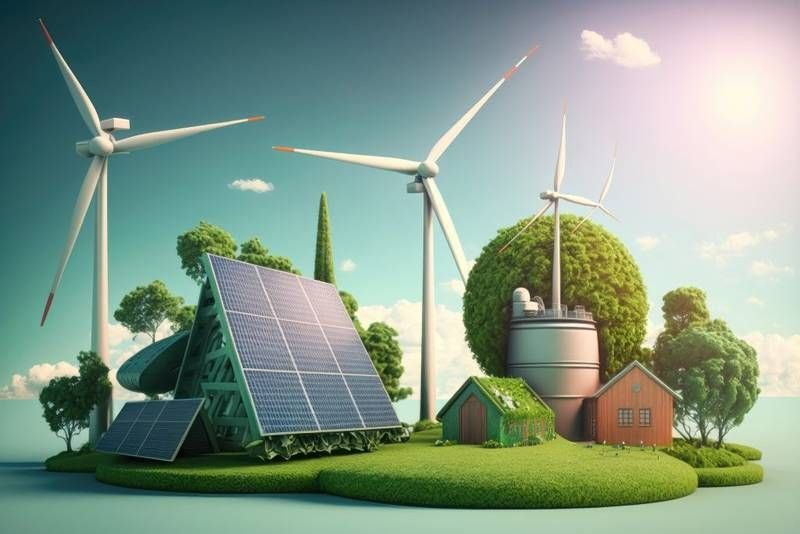Switzerland has taken the lead in recent years in the international effort to tackle climate change, emphasising renewable energy sources. Switzerland is a nation renowned for its immaculate landscapes, effective infrastructure, and dedication to environmental sustainability. In light of the mounting issues facing the world, the country’s energy transition is both a reflection of its ideals and a necessity. This article explores the policies, inventions, and difficulties that drive Switzerland’s transition to a sustainable energy future.
The Energy Scene in Switzerland
Switzerland has historically relied on a mix of fossil fuels, nuclear energy, and hydropower. Specifically, hydropower has been a major contributor, accounting for almost 55% of the nation’s electrical output. Switzerland’s energy plan is based mostly on hydropower, which is ideally suited for the country’s rugged terrain and profusion of rivers.
But the necessity of diversifying energy sources has become more widely acknowledged in recent years, especially in light of the worldwide movement to cut carbon emissions. By 2050, the Swiss government hopes to significantly boost the production of renewable energy, having set lofty targets to lessen the nation’s dependency on nuclear and fossil fuels. This change is a component of the larger “Energy Strategy 2050” initiative. which Swiss people supported in a referendum held in 2017.
The Future of Energy Strategy 2050: A Vision
A thorough plan for Switzerland’s energy transition is provided by the Energy Strategy 2050, which emphasises the phase-out of nuclear power, the expansion of renewable energy sources, and improved energy efficiency. The plan addresses both the domestic issues of energy security and sustainability as well as the global climate catastrophe.
The steady phase-out of nuclear energy, which presently supplies around 35% of Switzerland’s electricity, is one of the strategy’s main tenets. According to the plan, no new nuclear power facilities will be built, and those that are already in service will be retired when their useful lives are up. This choice is a reflection of public discomfort with nuclear energy in general and safety concerns in particular, especially in the wake of the Fukushima catastrophe in 2011.
Switzerland is making significant investments in renewable energy sources including solar, wind, and biomass to offset the fall in nuclear energy. Particularly in the last several years, solar energy has grown significantly, with photovoltaic system installations rising quickly all throughout the nation. In order to promote the use of renewable energy technologies by both families and enterprises, the Swiss government has also implemented a number of incentives, including as tax breaks and subsidies.

Possibilities and Difficulties
Switzerland’s transition to renewable energy is well under way, but there are obstacles to overcome. One of the main challenges is the erratic nature of renewable energy sources, such wind and solar power, which can cause variations in the availability of energy. In order to tackle this problem, Switzerland is investigating methods to improve energy storage capacities and enhance the grid’s administration. The creation of smart grids and advancements in battery technology are viewed as essential to guaranteeing a steady and dependable electricity supply.
The comparatively sluggish growth of wind energy in Switzerland presents another difficulty. It is challenging to locate wind farms in the country’s densely populated areas and steep terrain. Furthermore, local opposition to wind projects has impeded progress, frequently because of worries about noise and the project’s aesthetic impact on the terrain. The Swiss government is collaborating closely with local communities to discover workable solutions and to highlight the advantages of wind energy in an effort to remove these obstacles.
Despite these obstacles, there are a lot of opportunities associated with Switzerland’s shift to renewable energy. It is anticipated that the transition to clean energy would lead to the creation of new jobs in the green economy, especially in industries like engineering, construction, and energy services. Additionally, the creation of novel technologies and approaches for energy efficiency and Switzerland could take the lead in the international clean energy market thanks to renewable energy.
Hydropower’s Function
Hydropower continues to be an essential part of Switzerland’s energy mix as it continues its energy transformation. But hydropower’s function is changing. Hydropower has long been utilised as a dependable source of electricity, but it is also being used more and more to incorporate fluctuating renewable energy sources and balance the grid.
In this sense, pumped-storage hydropower plants are essential. These plants have the ability to store extra energy by pumping water to a higher height and release it when needed. With the use of these facilities, Switzerland is able to maintain grid stability by storing excess electricity produced by solar and wind power during times of low demand and releasing it during times of peak demand.
Furthermore, maintaining and growing the current hydroelectric infrastructure is a top priority. The Swiss government is funding research and development to reduce the environmental impact of these facilities in addition to renovations to increase the capacity and efficiency of hydropower plants.


